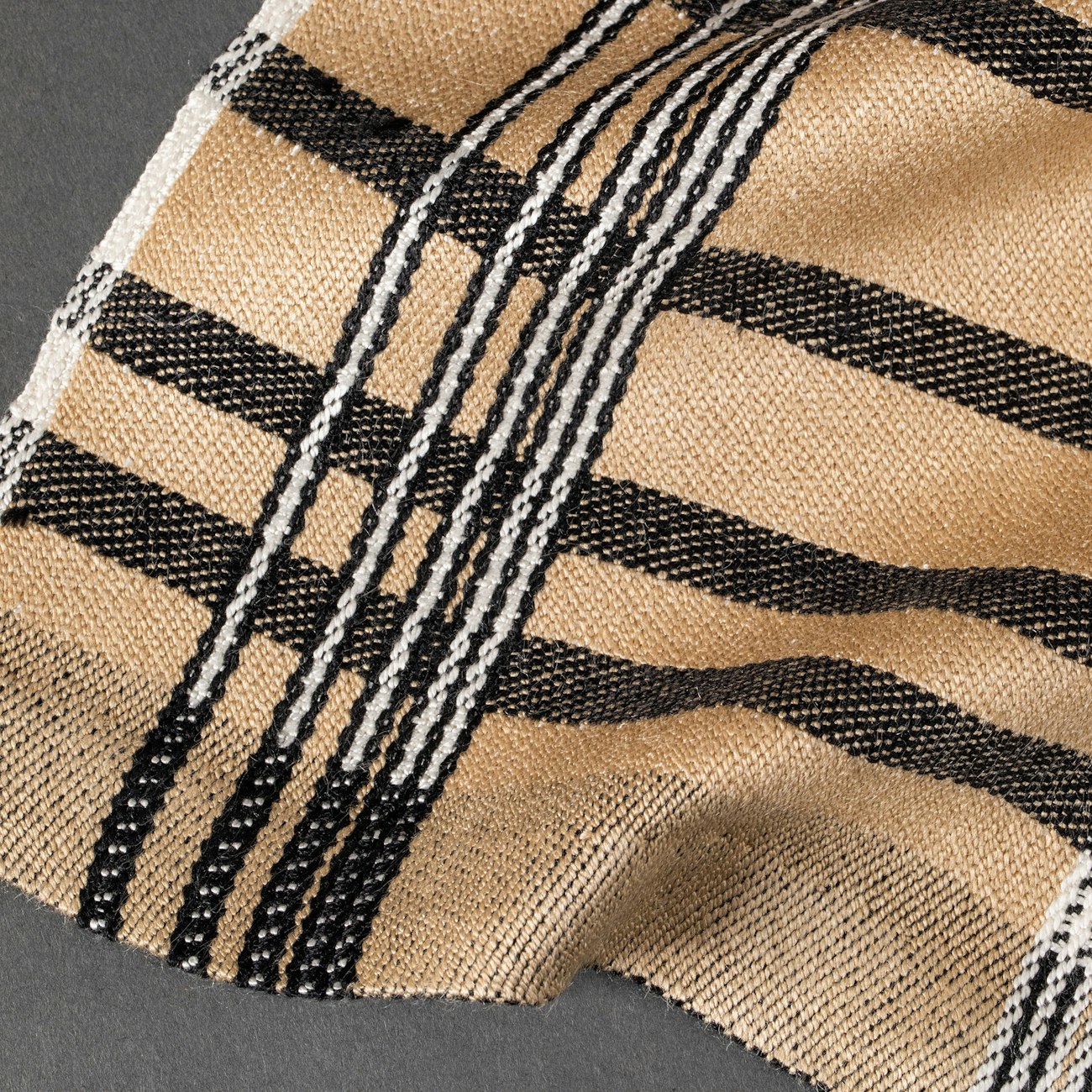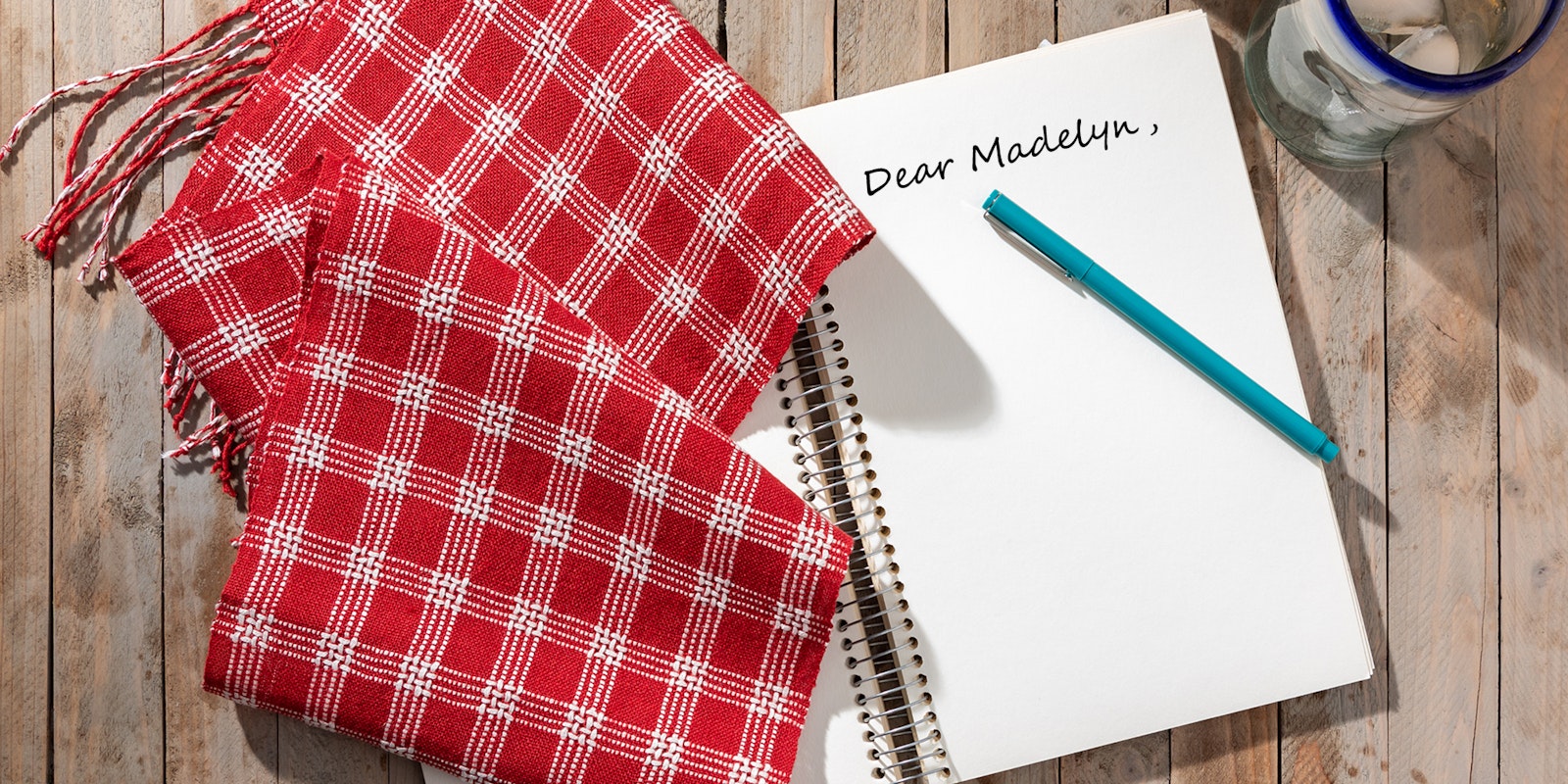Hi Madelyn!
I am having a problem with broken warp threads, quite a few of them. Currently, I’m weaving with 30/2 silk at 36 epi, 3 ends per dent in a 12-dent reed. Is silk more prone to breaking than cotton, Tencel, etc.? Do I have too many ends in each dent? Is it possible that there is something wrong with my loom? My jack loom has metal heddles, should I be using string heddles? –Kathy
Hi Kathy!
There are several factors to consider when you are determining the cause for broken warp threads. Here are three areas to look at and some possible solutions for each.
Draw-In Issues
First and foremost is to locate where the break actually occurs in the threads. If the selvedge threads are breaking near the fell, draw-in is the likely culprit. First, make sure you are allowing plenty of weft slack in the shed. I like to place the weft at an angle of about 30 degrees and beat on a closed shed (closing the shed prevents the weft from being pulled flat, out of that angle, as I beat). With sticky or fragile yarns, I do beat on an open shed, carefully watching that weft angle. If the piece is much wider than 12" and draw-in still occurs, using a temple can help (you still have to allow enough weft slack, but the temple allows you to turn the weft more firmly at the edge).
 Looking to try your hand at a 30/2 silk project? Brenda Gibson created two beautiful scarves for the September/October 2023 issue of Handwoven. Photo by Matt Graves
Looking to try your hand at a 30/2 silk project? Brenda Gibson created two beautiful scarves for the September/October 2023 issue of Handwoven. Photo by Matt Graves
Heddle Abrasion
If the threads are breaking right in front of or within the heddles, heddle wear is the problem. You don’t want to put string heddles on a jack loom since part of what makes the shaft stay down when it is not being raised is heddle weight. Also, it is not logical that string rubbing on a thread would be kinder to it than smooth metal. One way to minimize breakage caused by heddle abrasion is to advance the warp often, very often. This is especially important with inserted-eye heddles. With a sett as close as 36 ends per inch, it is possible that the adjacent heddle edges of the inserted-eye heddles are rubbing against their neighboring warp threads. For this reason, with fine yarns and close setts, I prefer flat steel heddles to inserted-eye heddles (inserted-eye heddles are round and take up much more space than flat steel).
Too Many Ends Per Dent
Three ends per dent is not too many threads in one dent of a 12-dent reed. In fact, breakage is more likely to occur if the reed is very fine (such as 20 dents per inch). If the reed were a factor, your threads would be breaking between the beater and the fell.
Silk should not be more prone to breakage than cotton or Tencel unless it is very loosely spun. And, I don’t think there is anything wrong with your loom!
My best advice would be to advance the warp often, which is good advice anyway!
~Madelyn
If you have a weaving question we would love to hear from you! Please email Madelyn!
Posted December 17, 2014; updated May 8, 2017; updated January 22, 2024.

